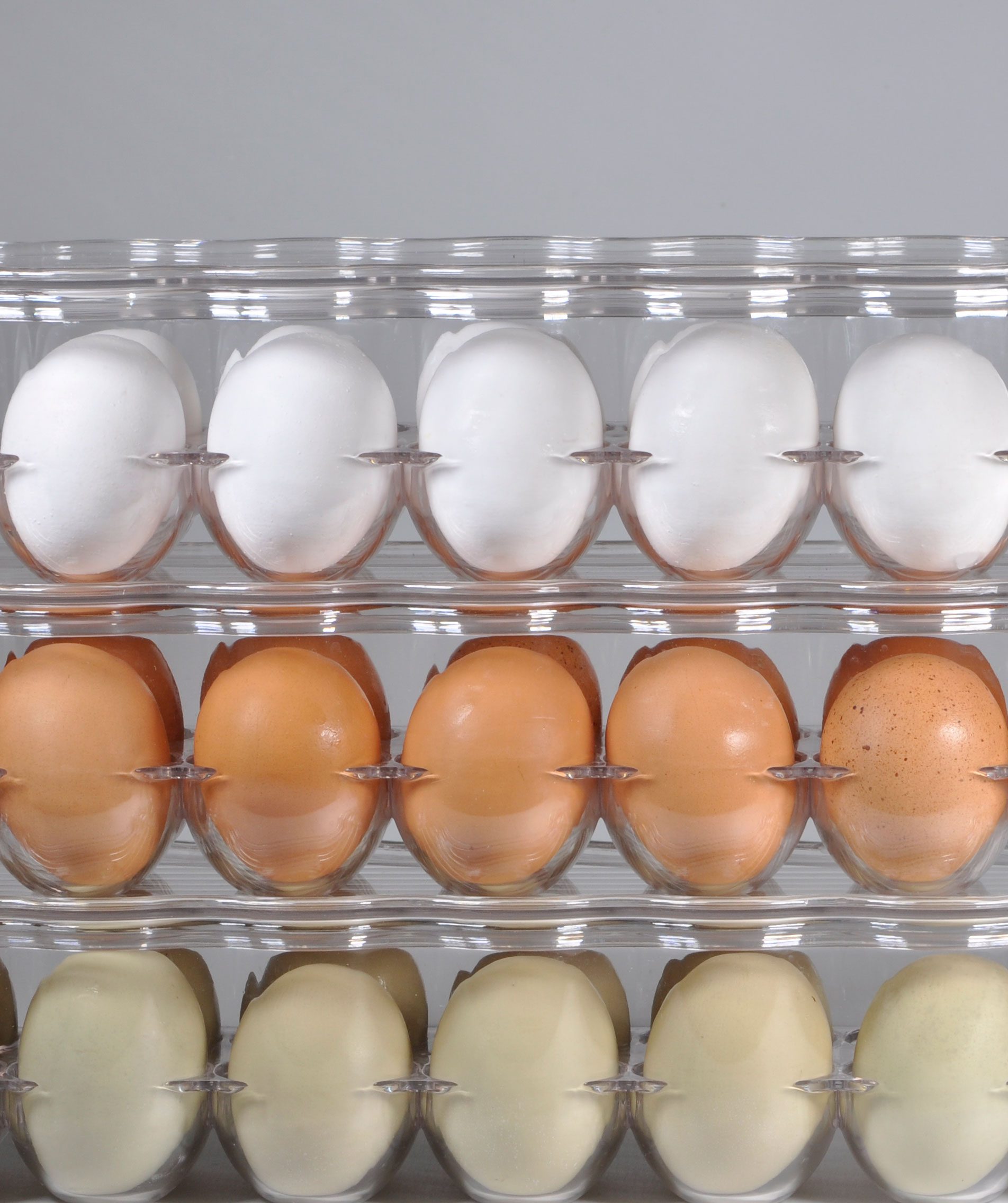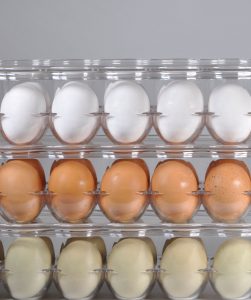
Chicken eggs in the United States were once available in two basic shell colors — unimaginative white and traditional farmstead brown. Along with the ongoing boom in backyard chicken flocks comes an interest in eggs with shells in a wider array of colors, including pink, blue and green. One of the most startling colors is a deep, rich olive green. Chickens that lay eggs with olive green shells are called Olive Eggers. Here are answers to six common questions asked about Olive Egger chickens:
What is an Olive Egger chicken?
An Olive Egger is a type of chicken that produces eggs with olive-drab shells. The color olive is a dark yellowish-green, like an unripe (green) olive. The word drab means the color is shaded toward brownish — a hue commonly associated with military uniforms.
Why keep Olive Egger chickens?
The main purpose of keeping Olive Egger chickens is to obtain eggs with olive-colored shells. Olive Eggers typically lay between 180 and 200 medium to large eggs each year. The color of their eggs makes a striking addition to any egg basket. For someone who markets eggs, adding olive shelled eggs to a carton of mixed color eggs is certain to grab customers’ attention.
What breed is an Olive Egger?
An olive egger chicken is not a particular breed. It is a hybrid developed by crossing two different breeds. The olive-drab shell color is achieved by mating a blue egg laying breed with a dark brown egg laying breed. Blue shells are blue throughout; brown shells have pigment only on the outside. The outcome of the cross is that Olive Egger hens lay blue eggs with a brown pigment overlay, resulting in a shade of olive green. The darkness of the brown pigment determines the depth of the shade of olive.
How are Olive Eggers classified?
Olive Eggers are not a true breed, so they are not classified by the American Poultry Association. They would be difficult to classify, because they don’t all look alike, since they can be produced by mating several different breed combinations. An informal poultry show, however, might accept Olive Eggers in the Miscellaneous Class.
What does an Olive Egger look like?
The color, size, and weight of Olive Eggers are determined by the breeds used to create them. These chickens therefore come in a variety of colors and comb styles. Olive Eggers may or may not have peacombs, muffs, beards, or feathered legs, and may or may not be rumpless.
Where Can I buy Olive Eggers?
Cackle Hatchery has been developing production Olive Egger chickens 2015. Cackle Hatchery’s Olive Eggers are bred by crossing blue-egg laying Cream Legbars with brown-egg laying Welsumers, resulting in chickens of uniform size and color, that are good layers of eggs in several attractive shades of olive green.
And that’s today’s news from the Cackle Coop.
Gail Damerow, author, The Chicken Encyclopedia



We have our first olive egger, Wilma. She is one of the BEST chickens we have ever had. Super sweet personality and very friendly. She started laying at about 5 months and has layed nearly every day!! We are in Texas and it is hot but it does not seem to bother her. She is on the small side. The eggs are beautiful and delicious. Our chickens free range about 10 hours a day. We feed layer grain, no corn or soy, organic and grow lots of greens for them that they enjoy.
That was a neat read. Injoyed it very much. Thanks for sharing.